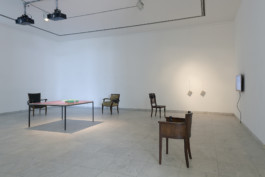











Paradise in a square 2016
Installation view
Museum Abteiberg, Mönchengladbach
Paradise in a square 2016
Installation view
Museum Abteiberg, Mönchengladbach
Paradise in a square 2016
Installation view
Museum Abteiberg, Mönchengladbach
Paradise in a square 2016
Installation view
Museum Abteiberg, Mönchengladbach
Paradise in a square 2016
Installation view
Museum Abteiberg, Mönchengladbach
Paradise in a square 2016
Installation view
Museum Abteiberg, Mönchengladbach
Paradise in a square 2016
Installation view
Museum Abteiberg, Mönchengladbach
Paradise in a square 2016
Installation view
Museum Abteiberg, Mönchengladbach
Paradise in a square 2016
Installation view
Museum Abteiberg, Mönchengladbach
Paradise in a square 2016
Installation view
Museum Abteiberg, Mönchengladbach
Paradise in a square 2016
Installation view
Museum Abteiberg, Mönchengladbach
Paradise in a square 2016
Installation view
Museum Abteiberg, Mönchengladbach
A trip to the Zoo in Cologne raised interest in the history of Zoological gardens, pleasure gardens, and menageries consequently looking back 6000BC to the Persian garden where people, plants and animals first found shelter within a defined square space divided into four equal parts with a water source at the center.
The term ‘enclosed space’ in Farsi (pari-daiza) was adopted in Christian mythology to describe the garden of Eden or Paradise. The principle of imposing order onto nature through the symmetric division of space subsequently finds forms in the gardens of Andalusia, the Mughal Empire, through to the Italian and French Renaissance gardens and epitomizes a basic desire for the management and optimization of spaces and objects.
The same instinct is applied to the collection, display and representation of exotic animals beginning in the second half of the eighteenth century through mechanisms that involved divisions in the form of structural systems of organization and classification.
The history of exploration and the display and representation of exotic animals sustains and carries forward practices that establish a genealogy of virtual identity in scientific categories.
The animals in the Zoo as forms of display arranged taxonomically are observed from a distance by people who are represented within a comparable system to which they regularly contribute becoming the authors of their own classification.
Established paradigms and methodologies penetrate not only the structures of physical environments but extend into virtual spaces namely online walled gardens curated and controlled to minimize user engagement outside its services and maximize the transparency of their behaviour inside.
The work Paradise in a Square is composed of a multi-projection setting within which a seventeen minute film compiles different categories of images (from exotic animal classifications, celebrity culture, gaming and social media, to “selfies” and 3D modelling, to programming) locating perception largely as a paradigm situated in reproductions, copies, spaces within books, films and virtual environments.
A three volume book edited in Wikipedia compiles and ramifies the research notes for this work and contains an extensive use of bookmarks linking the alphabetically ordered subjects of the notes together.
Adjacent to the main film, Paradise in a square, is a two part projection.
As an artist, a performer and a Japanese cartoon character, Nora Hansen’s documentation of her life and work are presented, and function as the input to the projection on the right; a construction of her avatar in real time in the 3d modelling programme Maya.
On the opposite wall, a Recurrent Neural Network is used to generate text, based on the Journal of the British explorer David Livingstone which is inputted as a text file. The configuration and learning process of the algorithm is shown in real time. The algorithm is able to generate more text in the style of the original. The output is presented beside the original text.